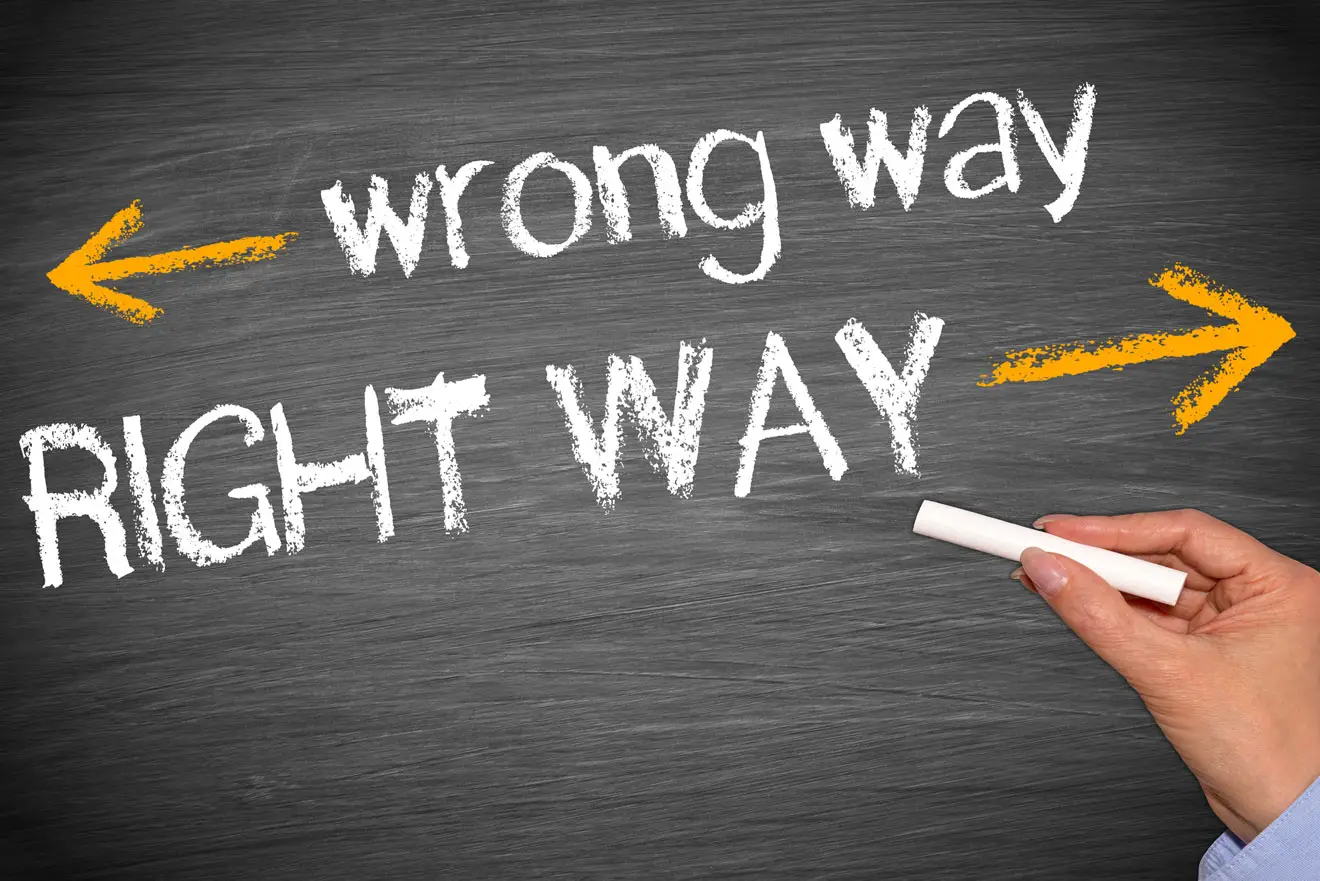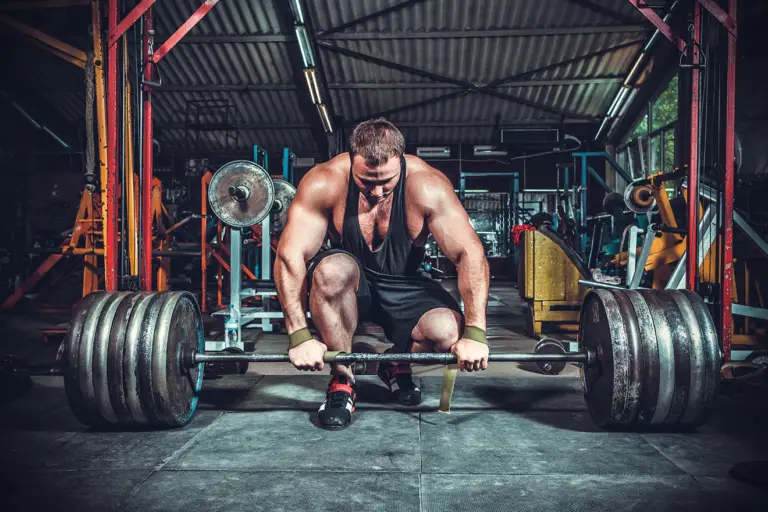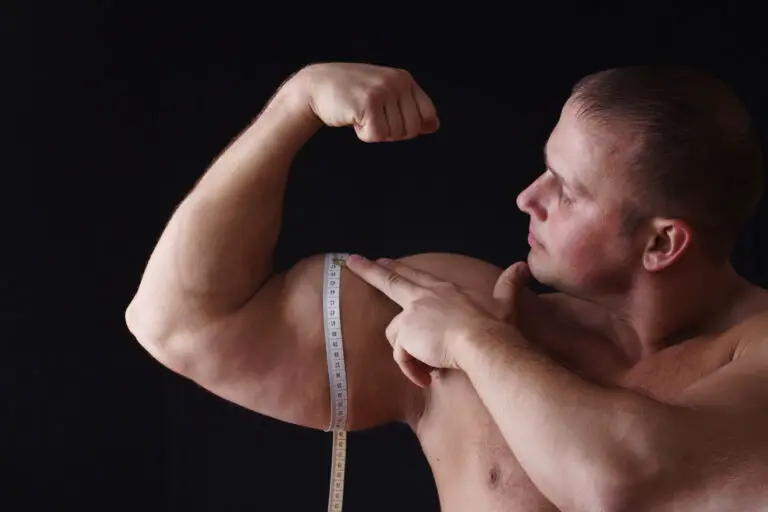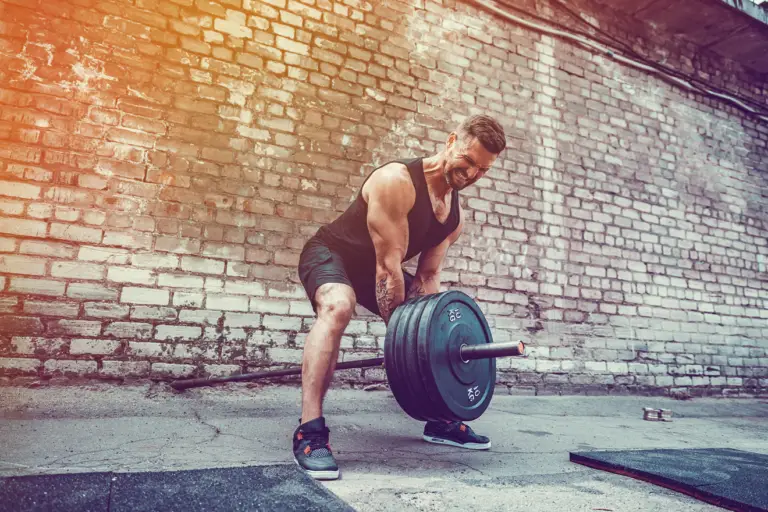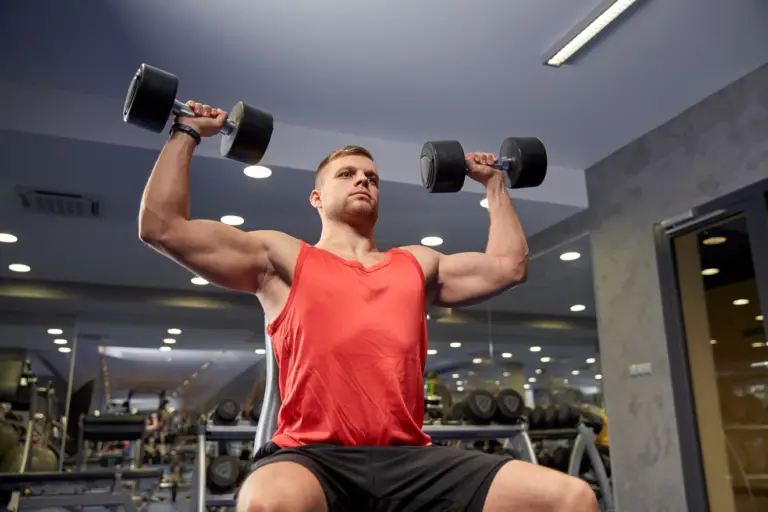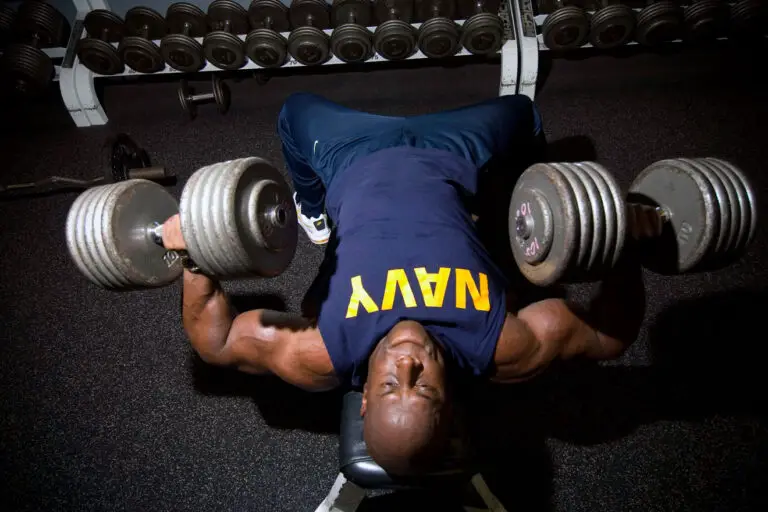How to get started with weight training
Follow the steps below to get started with weight training on the right foot. They will help you to define your weight training goals, choose the right weight training program, and find the right gym or create your ideal home gym.
Define your goals
One of the most important things you can do before setting off on any mission is to clearly define your goal. Why do you want to train? Is it to lose weight? Build muscle? Improve your figure? Enhance your sporting performance? If so, your goal is not clear enough.
For the best possible chance of achieving your goal, your goal must be SMART:
- Specific
- Measurable
- Agreed
- Realistic
- Time-bound
Specific
Being very specific about your long-term goal will help you to focus on the task at hand and stay on track. Think carefully about exactly what you want to achieve through training and write it down. For example, I want to lose 15 pounds of fat and add 20 pounds of muscle in one year might be a decent goal for a guy, whereas I want to lose 15 pounds of fat and add 10 pounds of muscle in one year might be a decent goal for a lady. In fact, it would be better to be even more specific and write down the exact body measurements (biceps, chest, waist, glutes, body-fat percentage, etc.) you wish to attain. You could also write down how much weight you wish to be able to lift with key exercises, such as the bench press, deadlift, and squat.
In addition to having specific long-term (yearly) goals, you should have specific short-term (monthly or quarterly) goals. The short-term goals should be designed to drive you towards your long-term goals. For example, if you want to add 20 pounds of muscle in one year, you will have to add five pounds each quarter.
Measurable
Your long-term and short-term goals should be measurable and trackable. The examples I gave of defining a specific amount of fat you want to lose, muscle you want to gain, weight you want to lift, or body measurement you want to achieve are ideal. If you can’t measure and track your progress, you will not know whether you are making the right kinds of gains and therefore nearing your short-term and long-term goals. See How to track your progress for guidance.
Agreed
To increase your likelihood of sticking to your short-term and long-term goals, discuss and agree upon your goals with your fitness instructor, training partner, or friend. Commit the goals to paper in the form of mission statements, sign and date them, and get the other party to sign them as a witness. Place the ‘contract’ somewhere where you can always see it so that it can remind you of your goals. Taking this extra measure will promote more commitment to, and focus on, achieving your goals.
Realistic
Your short-term and long-term goals must be realistic. Be realistic about what you can actually attain in the specified amount of time, taking into account your body type, genetics, and lifestyle. Acknowledge that progress is slow and difficult and that you will not achieve your ideal body and state of fitness any time soon. If your goals are unrealistic, you will likely fail to achieve them, in which case you will be more likely to lose motivation and give up.
Time-bound
To keep yourself focused and to prompt action, make sure that your short-term and long-term goals have deadlines. Without clear deadlines, you will likely procrastinate and put things off.
Choose a weight training program
Once you have decided on your SMART goals, you can choose a weight training program that will help you to achieve them. The training programs on this website are designed to be as effective and manageable as possible.
Decide on where you’re going to train
Now that you’ve defined your goals and chosen your training program, you have to decide where you’re going to train. You can train either at home or at a gym. The following questions will help you to decide:
- How much money do you have to spend?
- Can you afford the equipment necessary to build a decent and safe home gym?
- How good are you at motivating yourself?
- How far are you prepared to travel to a gym?
- Would you prefer to train with other people or by yourself?
If undecided, I would always recommend that you join a gym. The advantages are much more important than the disadvantages (see below). However, if possible, you should also buy essential pieces of equipment for your home (see Set up your home gym below). The home equipment is only for when you can’t make it to the gym. It ensures that you never have an excuse not to train.
Advantages of joining a gym
- Motivational gym atmosphere
- A diverse range of equipment
- Instructors on hand to offer assistance and advice
- Fellow gym-goers with whom to make friends, train, and keep motivated
- Spotters on hand to keep you safe
- Possible access to additional facilities, such as classes, a store, a swimming pool, and a sauna
- Once you pay, you’ll be more likely to train
Disadvantages of joining a gym
- Membership fees can sometimes be expensive
- Possible overcrowding during peak times (usually in the evening, after work, and in the morning, before work)
- May have to travel far
Advantages of training at home
- No membership fees
- Train in privacy
- No overcrowding
- Train whenever you like
- No need to travel
Disadvantages of training at home
- Essential equipment can be expensive
- Probably have a very small variety of equipment
- Likely lack big machines and cardiovascular equipment
- Less motivating environment
- No gym buddies with whom to bond and train
- No spotters for help and safety
- No instructors for advice and assistance
- Greater risk of injury
- No amenities, such as fitness classes, a swimming pool, etc.
Set up your home gym
If you do decide to train at home, whether male or female, you will need the following equipment:
- An adjustable bench
- A set of dumbbells
- A barbell
- A power rack/cage for safety
- A pull-up bar
- A multipurpose cable machine OR a set of clip resistance bands
- Ankle straps
Note that power racks often feature pull-up bars, and clip resistance band packages often include ankle straps.
The equipment listed above will ensure that you can train safely and effectively and get the most out of the weight training programs on this website. Though recommended for your home gym, the multipurpose cable machine is not essential, because I have provided alternative exercises for all cable and machine exercises. Luckily, the barbell, dumbbells, pull-up bar, and the set of clip resistance bands can be used to perform the equivalents of cable machine exercises, thus saving you from having to buy a multipurpose cable machine. In fact, the set of clip resistance bands can be used to perform the equivalents of most of the barbell, dumbbell, and pull-up bar exercises, but I would recommend that you use the barbell, dumbbells, and pull-up bar instead for those exercises because the clip resistance bands are not always as effective or do not always provide all of the same benefits.
Having said that, clip resistance bands (Figure 1) have come a long way. Stronger than ever, they can be stacked onto handles to dramatically increase resistance. They come with door anchors and ankle straps, allowing you to perform a huge range of exercises at home. As they are lightweight, you can also take them on your travels, where they can help you to keep making progress.
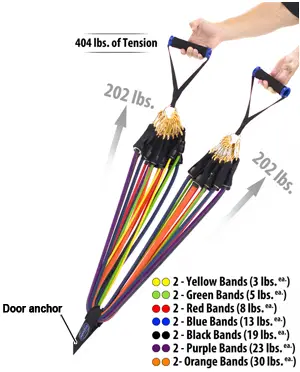
Figure 1. Clip resistance bands. Stacking all of the bands can produce hundreds of pounds of tension. The bands can either be stood on or anchored to any height of a door using the door anchor, allowing you to perform a multitude of exercises. The packages also usually include ankle straps for leg exercises.
Other equipment that you will need to effectively complete the exercises in the training programs include:
- An ab wheel
- Dip bars (to attach to your power rack)
- A stability ball
- Loop bands (for ladies)
However, these are completely optional.
Tips for creating a great home gym
Here are some additional tips that will help you to create the kind of home gym that will serve you well and make you proud.
- Designate a spacious area for your gym. Basements and garages work well. The area must be ventilated, though
- Lay rubber mats on the floor to prevent damage from weights
- Hang mirrors on the walls. These will help you to observe your form, technique, and progress
- Set up a sound system so that you can listen to music as you train
- Hang inspiring pictures on the walls
- Pin pictures of your progress to a pin board for motivation
Find the right gym
If you decide to join a gym, here are some tips to help you find one that will meet your needs.
- Make sure that the gym is closer than a 15-minute drive. The farther away it is, the less likely you will be to attend regularly
- The gym should have a wide range of equipment. There should be plenty of free weights and multiple adjustable benches, squat racks, cable machines, weight machines, and cardio machines. A couple of boxing bags are a bonus. The equipment should be high quality and well maintained, and they should be cleaned and tested regularly
- Make sure that the gym is well ventilated and spacious and that it has a motivating atmosphere
- Try to get an idea of the kind of people who train there. Could you train with them?
- Check if the instructors are professionally qualified
- Get the right price. Compare membership fees, taking into account any initial joining fees. Ask about deals, such as off-peak discounts. Find out if other facilities — swimming pool, etc. — are included in the price
- Ask for a trial workout. Conduct your trial at the same time of day that you will be regularly attending so that you can see if the gym is overcrowded at that time, as well as gauge the crowd with whom you will be training
- If you have options, try them all and see which one you prefer
What you will need
Whether you train at home or at a gym, you will need the following essentials for every workout:
- Suitable clothing
- A towel
- A bottle of water
The towel is essential not only to wipe your sweat but also to lay it over benches that others have sweated on!
Optionally, you may need:
- A phone and headphones to listen to your own music instead of the music played at the gym
- Training gloves if you don’t want calluses on your hands
And if you start lifting very heavy weights, you may also need:
- A weightlifting belt to support your lower back
- Straps to improve your grip
- Knee wraps to support your knees

